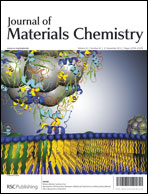Efficient solid-state white light-emitting electrochemical cells based on phosphorescent sensitization
Abstract
Efficient phosphorescent sensitized white light-emitting electrochemical cells (LECs) based on a blue-emitting phosphorescent cationic transition metal complex (CTMC) doped with a red-emitting


 Please wait while we load your content...
Please wait while we load your content...